HALLO,HIVE!
This coconut has been floating in the sea for a long time, or maybe even in the seas? The seasoned "sea wolf" has covered himself in shells and is ready for new journeys. We are just waiting for a favorable wave!
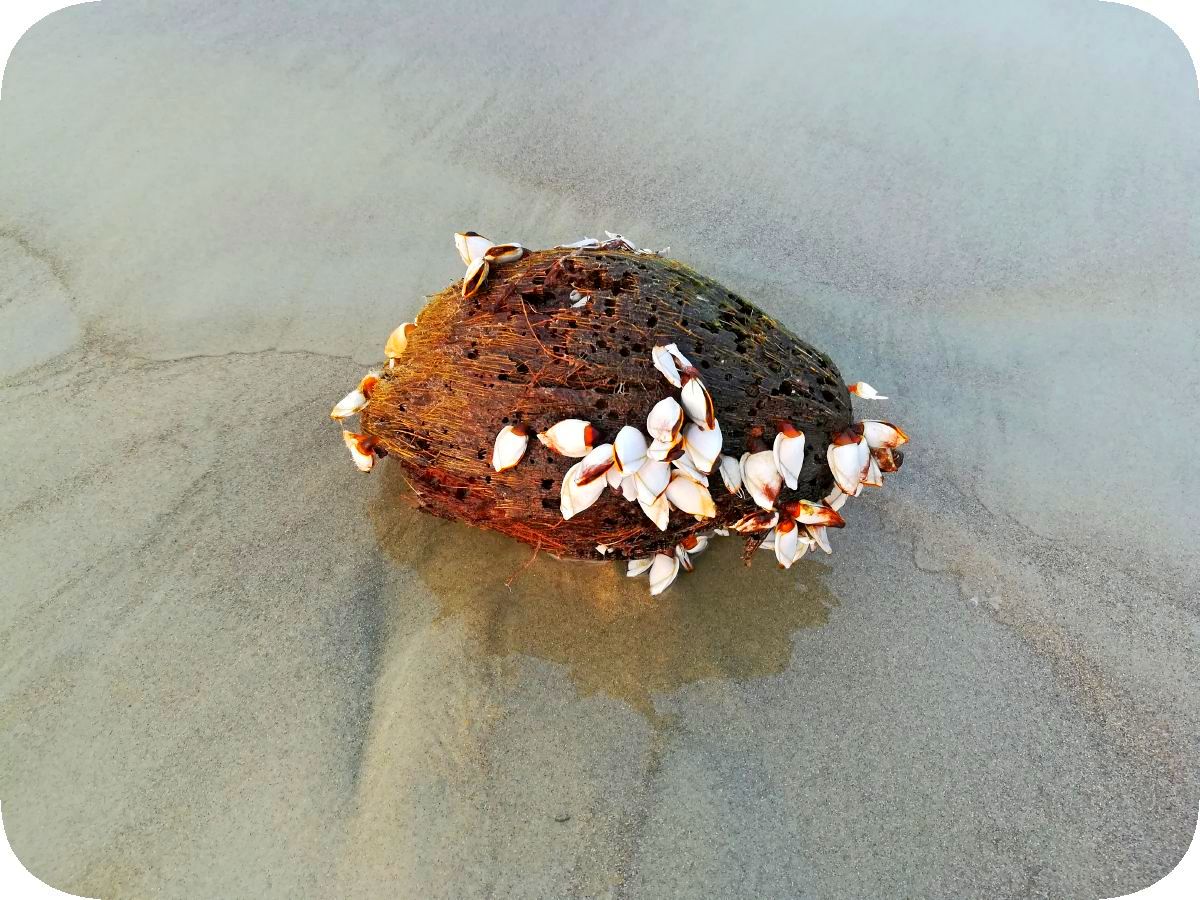
And this beauty with blue jelly-like tentacles is very unique. This is not a jellyfish, as it may seem at first glance, but only a distant relative. This is a "porpita porpita", also known as a "blue button". A whole colony of polyps. This living organism feeds on plankton and all sorts of small things. The circle in the center is a float with gas, with the help of which this organism floats on the surface of the warm sea, and the tentacles serve to capture the target and other needs. One of the relatives of this "blue button" is the famous and very poisonous "Portuguese man-of-war". But the "button" is not so poisonous, although you still shouldn't touch it with your hands, you can get very unpleasant tactile sensations and skin irritation. You should first think about what is in front of you, and then take it in your hands. And it's better not to touch such things at all.
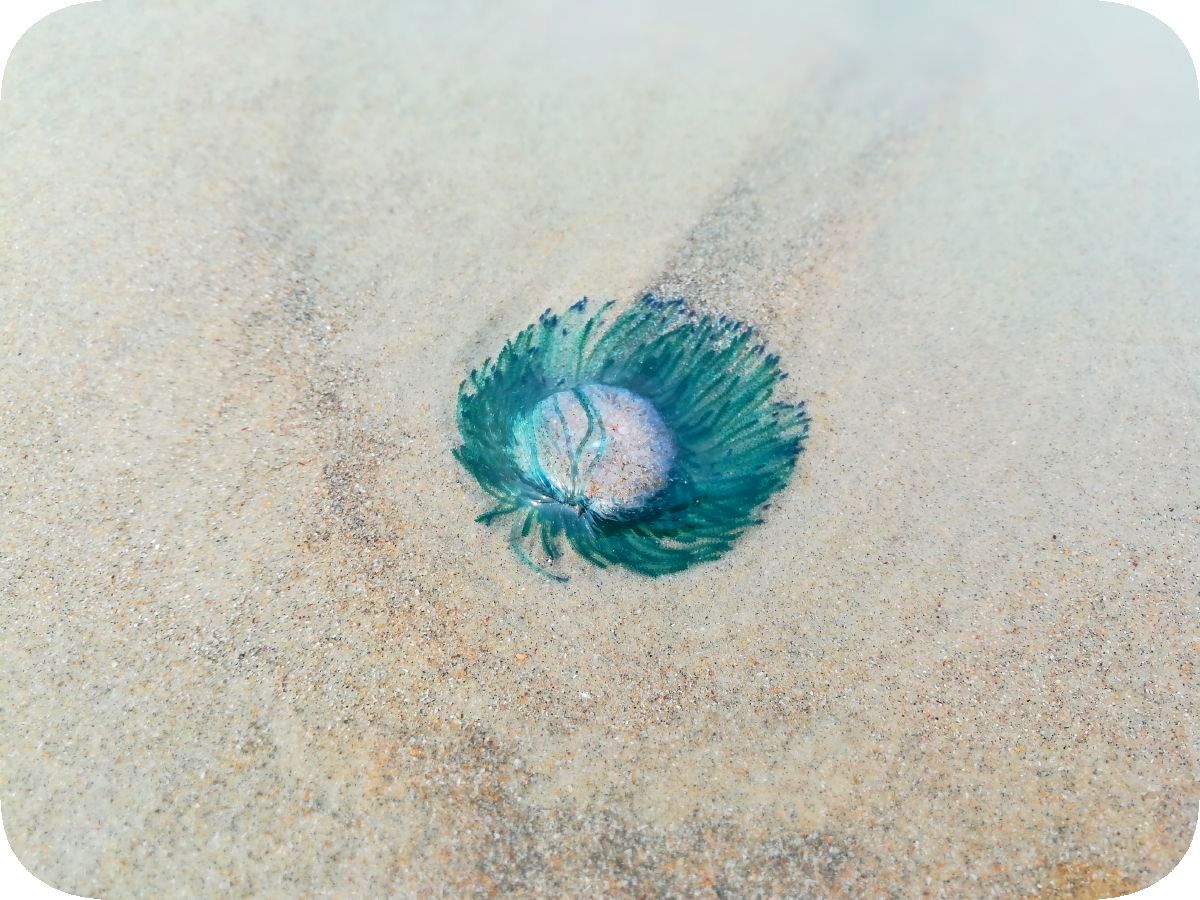
And this is already a jellyfish!
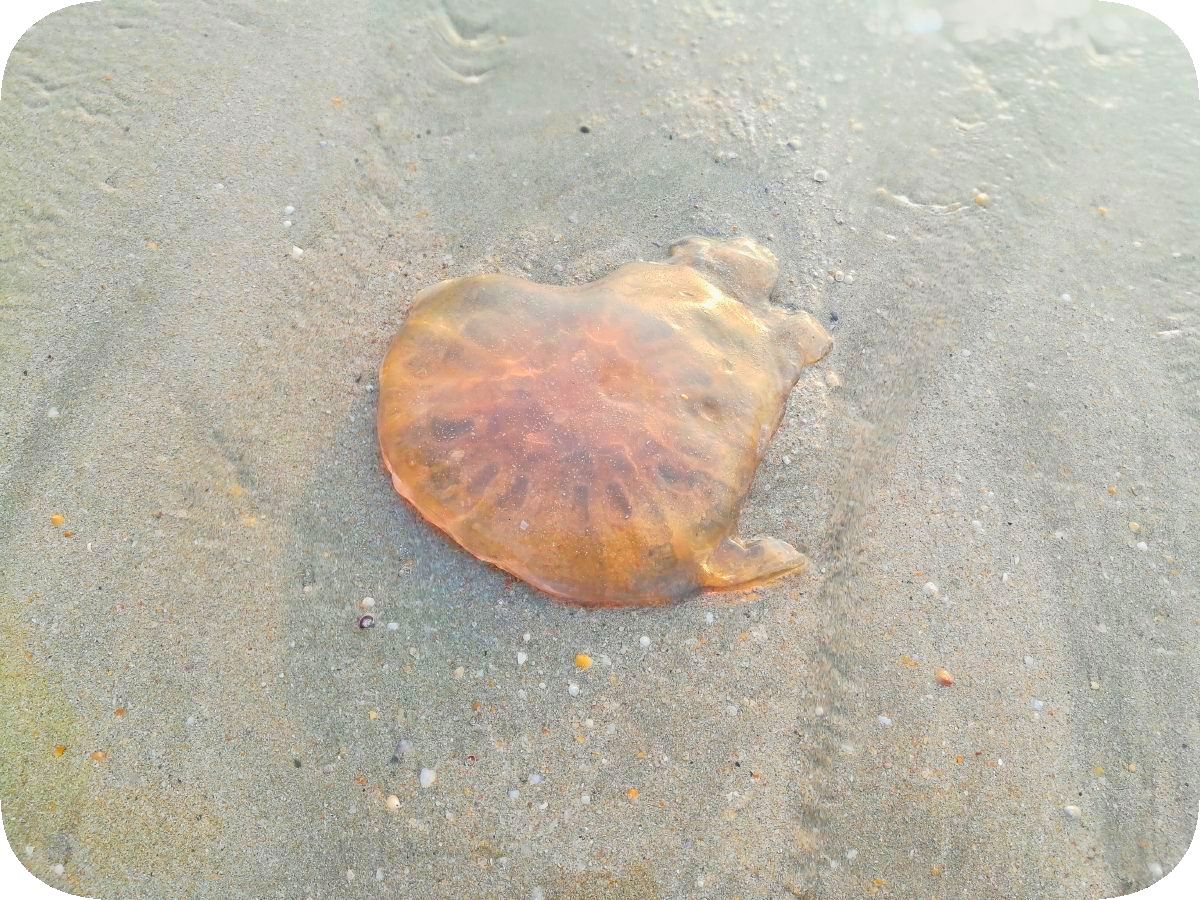
I specially took a closer photo of it. Goa's jellyfish in the shape of a heart, romantic, right? We didn't touch the jellyfish with our hands either, well! We still have a lot of rest to do, no need for hospital adventures!
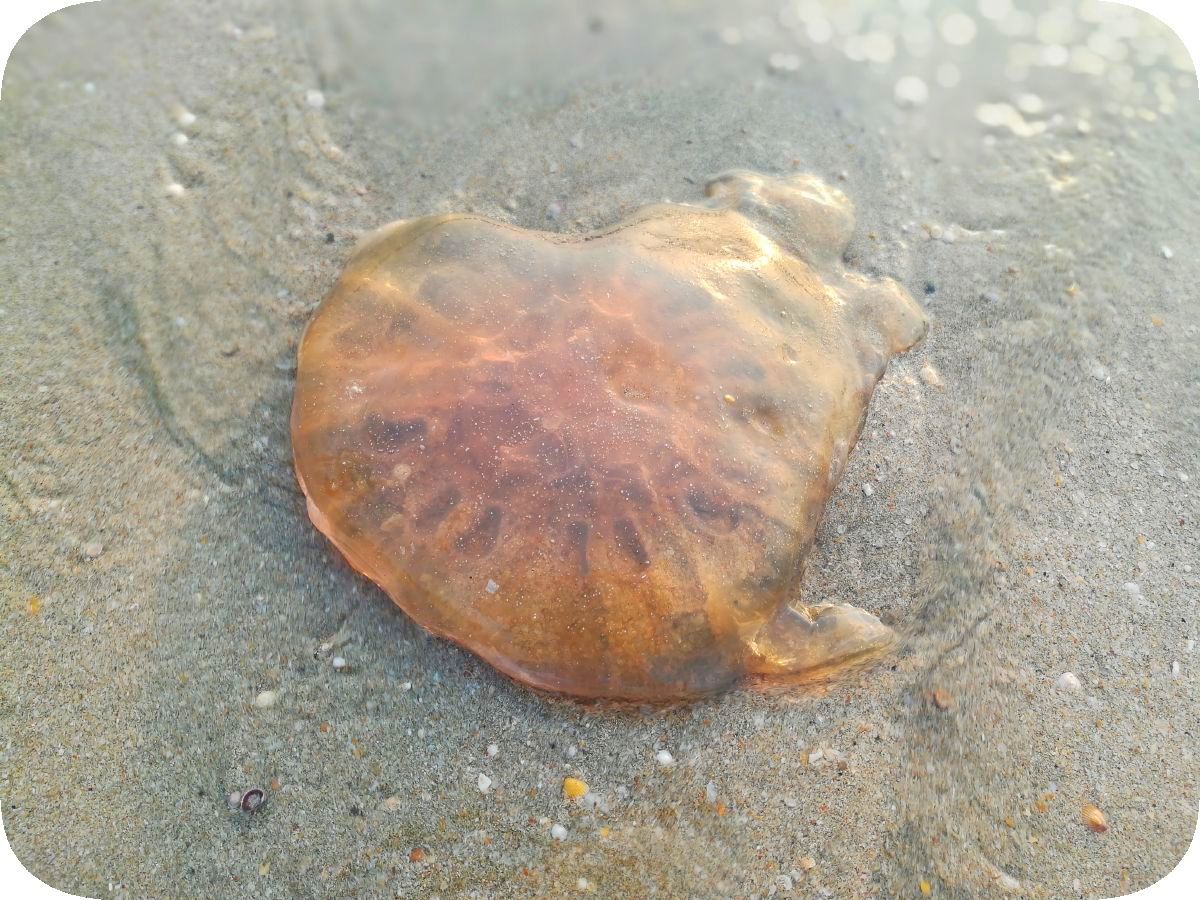
And we touched these shells.
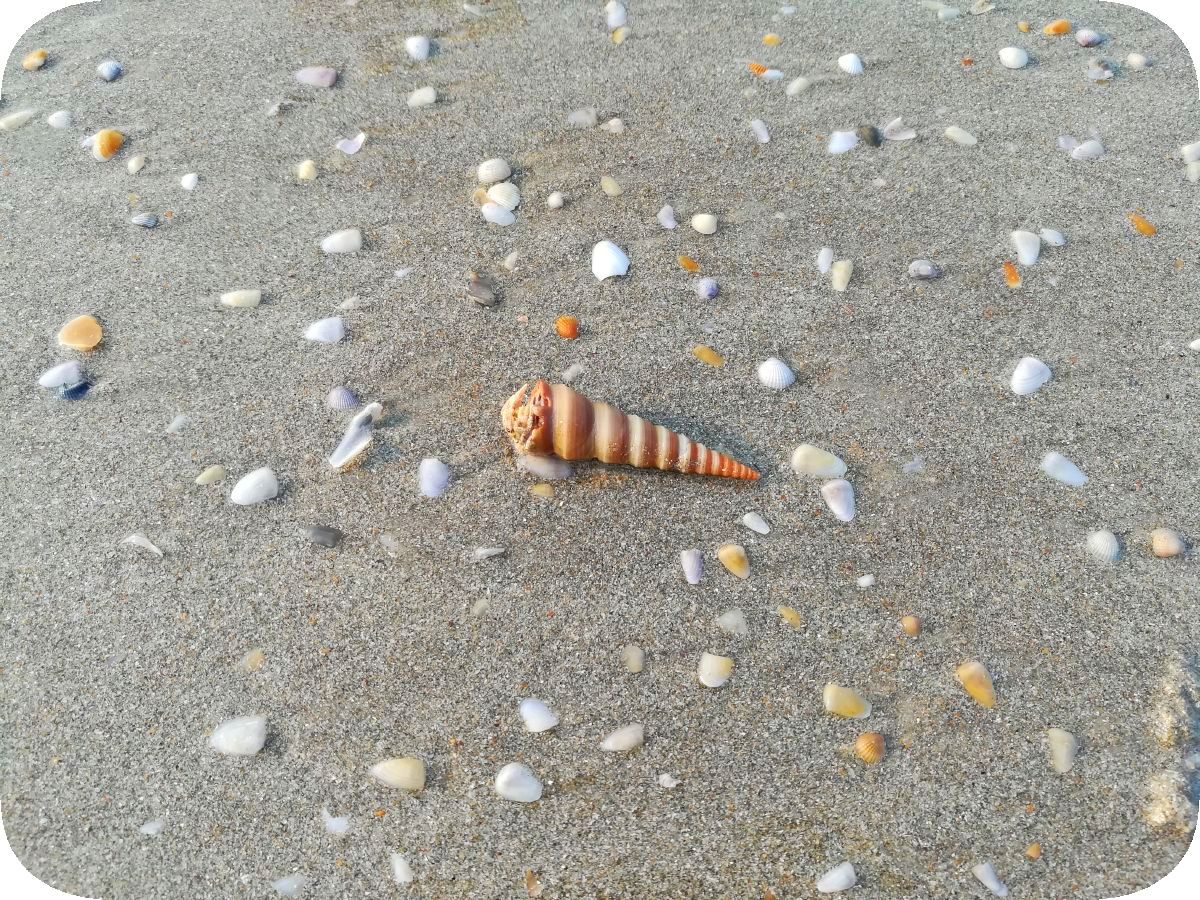
●
..to be continued...
Diese Kokosnuss schwimmt schon lange im Meer, oder vielleicht sogar in den Meeren? Der erfahrene „Seewolf“ ist mit Muscheln überwuchert und bereit für neue Reisen. Wir warten nur auf eine günstige Welle!
Und diese Schönheit mit den blauen, gallertartigen Tentakeln ist ziemlich einzigartig. Dies ist keine Qualle, wie es auf den ersten Blick scheinen mag, sondern nur ein entfernter Verwandter. Das ist „porpita porpita“, auch bekannt als „blauer Knopf“. Eine ganze Polypenkolonie. Dieser lebende Organismus ernährt sich von Plankton und allerlei Kleinigkeiten. Der Kreis in der Mitte ist ein mit Gas gefüllter Schwimmer, mit dessen Hilfe dieser Organismus auf der Oberfläche des warmen Meeres schwimmt, und die Tentakel werden verwendet, um das Ziel und andere Bedürfnisse zu fangen. Einer der Verwandten dieses „blauen Knopfes“ ist der berühmte und sehr giftige „portugiesische Kriegsmann“. Aber der „Knopf“ ist nicht so giftig, obwohl man ihn trotzdem nicht mit den Händen berühren sollte, kann es zu sehr unangenehmen Tastempfindungen und Hautreizungen kommen. Sie sollten zuerst darüber nachdenken, was vor Ihnen liegt, und es dann in die Hand nehmen. Es ist besser, solche Dinge überhaupt nicht anzufassen.
Das ist eine Qualle!
Ich habe sie absichtlich näher fotografiert. Gänsequalle in Herzform, Romantik, nicht wahr? Wir haben die Qualle auch nicht mit den Händen berührt, na ja! Wir haben noch Zeit zum Ausruhen und Entspannen, wir brauchen keine Krankenhausabenteuer!
Das sind die Muscheln, die wir berührt haben.
●
..fortgesetzt werden...
